
<html><head></head><body><p>Looking back at the meeting Planning versus architect</p></body></html>
House of Arts in Brno - House of Lords from Kunštát, 21.11.2007 19:00
The penultimate Wednesday in November saw the lecture hall of the House of Lords in Kunštát filled to capacity. The evening's program featured a discussion meeting from the second cycle of Versus Architect. The organizers from the civic association Versus Architect decided to dedicate the second year of thematic evenings to the issue of urbanism. The first part attempted to resolve the question of whether cities should be planned or not.
A major disappointment was the absence of the main star of the evening - architect and urban planner Roman Koucký, author of several books on urbanism, creator of numerous urban plans and studies, and educator at the Prague Faculty of Architecture. Illness prevented Roman Koucký from presenting the contribution that the majority of the audience was waiting for. During the evening, opinions were voiced by Zdeňka Vydrová, Radek Kolařík, and Petr Pelčák.
The theme of the evening was summarized by all speakers with the statement that the city should be planned; the question remains how. It was disappointing that no one delved deeply into the results of spontaneous urban development or compared structures that arose from uncontrolled construction with those from regulated planning.
The first contribution came from Zdeňka Vydrová, who discussed her work as a city architect in Litomyšl. She gradually went through the most interesting architectural and urban events in this East Bohemian town. From the construction of a significant gap in the square of Litomyšl, which was to be designed by Josef Pleskot after winning a competition but ended up being mediocre, to the most recent realization of a bus station with an adjacent supermarket by the studio RAW. Zdeňka Vydrová warned that the role of the city architect is not a universal key to solving problems, and that cooperation with politicians, city institutions, and the investor is essential.
In her presentation, alongside the works of Josef Pleskot, a plethora of architects from the Brno Municipal House appeared. Strangely enough, the most current projects of the Wellness Center by D.R.N.H. and the Protestant church by Zdeněk Franek were not mentioned by the member of the Municipal House.
The contribution of Professor Petr Pelčák could be summarized in two parts. The first was filled with a sequence of visual documentation of ancient cities along with warm commentary. The metaphysical formal perspectives of Renaissance cities had already plunged the attendees into lethargy, from which they fortunately were jolted awake in the second part of the lecture by photographs from the largest construction site in Europe - Hamburg, Germany. The transformation of Hamburg's port brownfields into vibrant urban neighborhoods, featuring the flagship Elbphilharmonie by Herzog & de Meuron, was an interesting example of contemporary city planning, but its possible application to our conditions was not suggested by the speaker. We were only given hints of dissatisfaction with the planning tactics of current developers, who surprisingly receive willing support from Petr Pelčák's design office. Personally, I looked forward to the analysis of the success of Brno's Vaňkovka, the future of the Zbrojovka in Zábrdovice, or the administrative Spielberg Park, in which Professor Pelčák may not have been directly involved, but was present for all the approval intricacies. We learned nothing about the reasons for his office's frequent and generous collaboration with the city of Brno.
Docent from the Prague VŠUP Radek Kolařík, wearing an amazing t-shirt and fantastic shoes, introduced several of his own urban projects at the beginning. The RKAW studio advocates an unconventional creative approach, where they create special standards for drawing documentation for each urban commission. Perhaps for this reason, the introduction of his contribution felt like a machine-gun fire of graphic design. Personally, I grasped little from the projects presented. Much more interesting was the continuation of the lecture, during which the Kolařík couple’s trip to Dubai was discussed. The abundance of sunny photographs created an optimistic atmosphere in the hall, which was replaced by skepticism about the image of modern Dubai. The question of sustainable development in megacities was tackled by the last Venice Biennale, and Radek Kolařík mentioned it often. The most important message of his contribution was the assertion that "it is not essential to plan the form, but the system."
The ensuing discussion over questions from the audience intensified the positions of Pelčák and Kolařík. While Kolařík held an optimistic view of the matter with faith in a better future that urban planners could envision, Pelčák lamented the current social order and the impossibility of quality urban planning. The discussion culminated with Kolařík’s provocative statement that it would be difficult to find urban negatives in satellite development, to which fresh Professor Pelčák from FA VUT could not respond. Strangely, this served-up question did not prompt either a slam dunk from anyone in the audience and rolled off quietly. Symbolically, this closed the first meeting of the second cycle of Versus Architect.
That Wednesday evening was marked by the absence of Roman Koucký. Let us hope that the second meeting, which will take place on Wednesday, February 20, at 7 PM again in the House of Lords in Kunštát, will offer a more fruitful debate. The topic will be transportation, the most pressing issue of contemporary cities. Contributions will be presented by both traffic engineers and architects. We definitely have something to look forward to.
A major disappointment was the absence of the main star of the evening - architect and urban planner Roman Koucký, author of several books on urbanism, creator of numerous urban plans and studies, and educator at the Prague Faculty of Architecture. Illness prevented Roman Koucký from presenting the contribution that the majority of the audience was waiting for. During the evening, opinions were voiced by Zdeňka Vydrová, Radek Kolařík, and Petr Pelčák.
The theme of the evening was summarized by all speakers with the statement that the city should be planned; the question remains how. It was disappointing that no one delved deeply into the results of spontaneous urban development or compared structures that arose from uncontrolled construction with those from regulated planning.
The first contribution came from Zdeňka Vydrová, who discussed her work as a city architect in Litomyšl. She gradually went through the most interesting architectural and urban events in this East Bohemian town. From the construction of a significant gap in the square of Litomyšl, which was to be designed by Josef Pleskot after winning a competition but ended up being mediocre, to the most recent realization of a bus station with an adjacent supermarket by the studio RAW. Zdeňka Vydrová warned that the role of the city architect is not a universal key to solving problems, and that cooperation with politicians, city institutions, and the investor is essential.
In her presentation, alongside the works of Josef Pleskot, a plethora of architects from the Brno Municipal House appeared. Strangely enough, the most current projects of the Wellness Center by D.R.N.H. and the Protestant church by Zdeněk Franek were not mentioned by the member of the Municipal House.
The contribution of Professor Petr Pelčák could be summarized in two parts. The first was filled with a sequence of visual documentation of ancient cities along with warm commentary. The metaphysical formal perspectives of Renaissance cities had already plunged the attendees into lethargy, from which they fortunately were jolted awake in the second part of the lecture by photographs from the largest construction site in Europe - Hamburg, Germany. The transformation of Hamburg's port brownfields into vibrant urban neighborhoods, featuring the flagship Elbphilharmonie by Herzog & de Meuron, was an interesting example of contemporary city planning, but its possible application to our conditions was not suggested by the speaker. We were only given hints of dissatisfaction with the planning tactics of current developers, who surprisingly receive willing support from Petr Pelčák's design office. Personally, I looked forward to the analysis of the success of Brno's Vaňkovka, the future of the Zbrojovka in Zábrdovice, or the administrative Spielberg Park, in which Professor Pelčák may not have been directly involved, but was present for all the approval intricacies. We learned nothing about the reasons for his office's frequent and generous collaboration with the city of Brno.
Docent from the Prague VŠUP Radek Kolařík, wearing an amazing t-shirt and fantastic shoes, introduced several of his own urban projects at the beginning. The RKAW studio advocates an unconventional creative approach, where they create special standards for drawing documentation for each urban commission. Perhaps for this reason, the introduction of his contribution felt like a machine-gun fire of graphic design. Personally, I grasped little from the projects presented. Much more interesting was the continuation of the lecture, during which the Kolařík couple’s trip to Dubai was discussed. The abundance of sunny photographs created an optimistic atmosphere in the hall, which was replaced by skepticism about the image of modern Dubai. The question of sustainable development in megacities was tackled by the last Venice Biennale, and Radek Kolařík mentioned it often. The most important message of his contribution was the assertion that "it is not essential to plan the form, but the system."
The ensuing discussion over questions from the audience intensified the positions of Pelčák and Kolařík. While Kolařík held an optimistic view of the matter with faith in a better future that urban planners could envision, Pelčák lamented the current social order and the impossibility of quality urban planning. The discussion culminated with Kolařík’s provocative statement that it would be difficult to find urban negatives in satellite development, to which fresh Professor Pelčák from FA VUT could not respond. Strangely, this served-up question did not prompt either a slam dunk from anyone in the audience and rolled off quietly. Symbolically, this closed the first meeting of the second cycle of Versus Architect.
That Wednesday evening was marked by the absence of Roman Koucký. Let us hope that the second meeting, which will take place on Wednesday, February 20, at 7 PM again in the House of Lords in Kunštát, will offer a more fruitful debate. The topic will be transportation, the most pressing issue of contemporary cities. Contributions will be presented by both traffic engineers and architects. We definitely have something to look forward to.
The English translation is powered by AI tool. Switch to Czech to view the original text source.
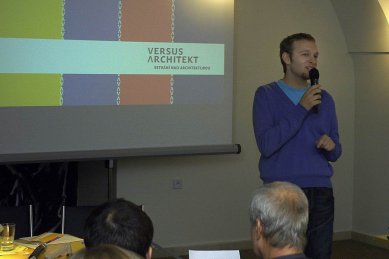
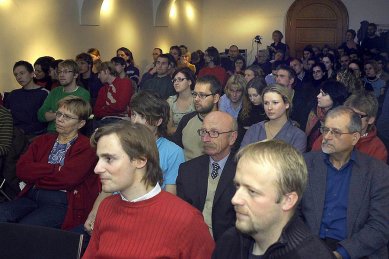
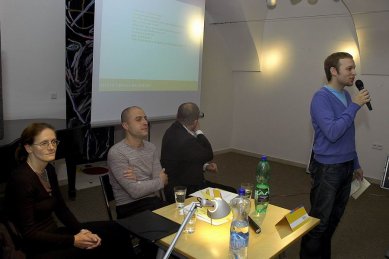
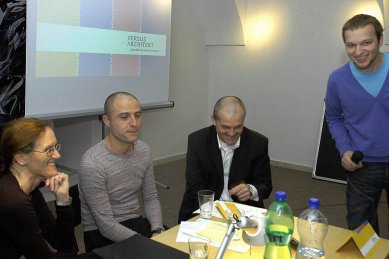
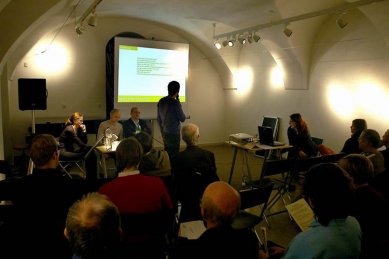
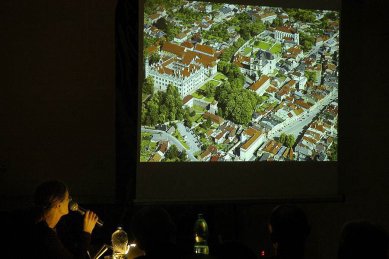
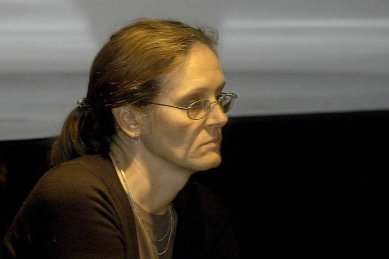
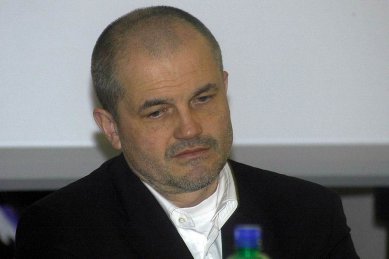
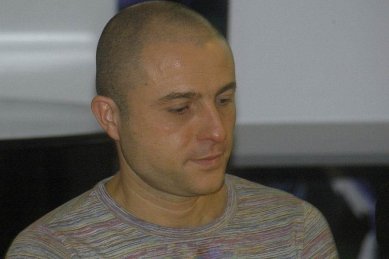
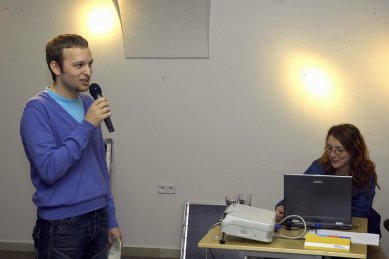
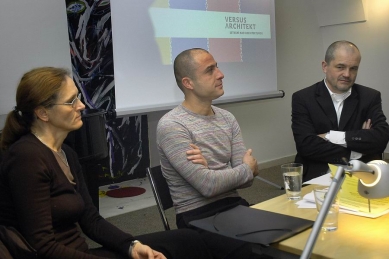
6 comments
add comment
Subject
Author
Date
Profesor Pelčák?
Alena Nováková
03.03.08 06:06
Prednaska
buri
04.03.08 01:21
Re: A.N.
Michala Hrnčířová
04.03.08 10:11
Profesor Pelčák!!!
Jitka Čmáralová
11.03.08 09:35
Profesor Pelčák?
Alena Nováková
21.03.08 07:12
show all comments










